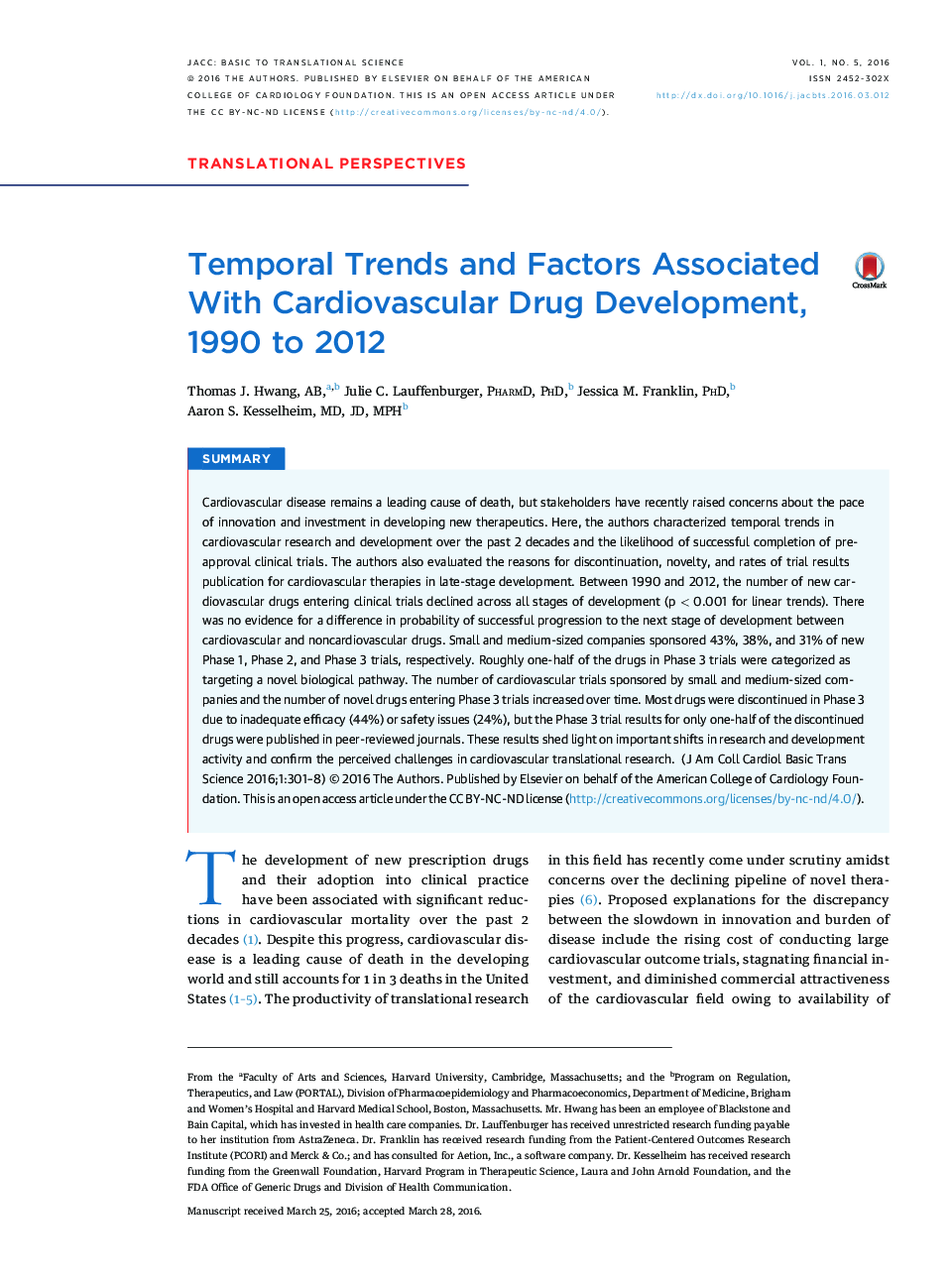| Article ID | Journal | Published Year | Pages | File Type |
|---|---|---|---|---|
| 2937532 | JACC: Basic to Translational Science | 2016 | 8 Pages |
SummaryCardiovascular disease remains a leading cause of death, but stakeholders have recently raised concerns about the pace of innovation and investment in developing new therapeutics. Here, the authors characterized temporal trends in cardiovascular research and development over the past 2 decades and the likelihood of successful completion of pre-approval clinical trials. The authors also evaluated the reasons for discontinuation, novelty, and rates of trial results publication for cardiovascular therapies in late-stage development. Between 1990 and 2012, the number of new cardiovascular drugs entering clinical trials declined across all stages of development (p < 0.001 for linear trends). There was no evidence for a difference in probability of successful progression to the next stage of development between cardiovascular and noncardiovascular drugs. Small and medium-sized companies sponsored 43%, 38%, and 31% of new Phase 1, Phase 2, and Phase 3 trials, respectively. Roughly one-half of the drugs in Phase 3 trials were categorized as targeting a novel biological pathway. The number of cardiovascular trials sponsored by small and medium-sized companies and the number of novel drugs entering Phase 3 trials increased over time. Most drugs were discontinued in Phase 3 due to inadequate efficacy (44%) or safety issues (24%), but the Phase 3 trial results for only one-half of the discontinued drugs were published in peer-reviewed journals. These results shed light on important shifts in research and development activity and confirm the perceived challenges in cardiovascular translational research.
